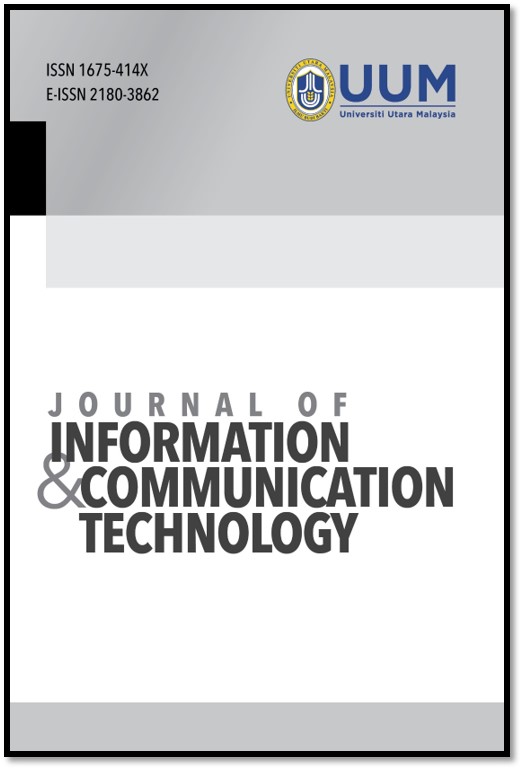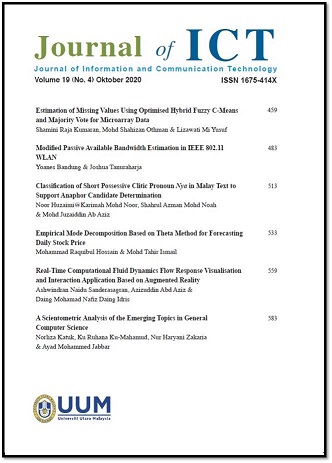Machine Learning Models for Behavioural Diversity of Asian Elephants Prediction Using Satellite Collar Data
DOI:
https://doi.org/10.32890/jict2023.22.3.3Keywords:
Machine learning, XGBoost algorithm, Satellite collar data, Behavior classificationAbstract
Analysis of animal movement data using statistical applications and machine learning has developed rapidly in line with the development
and use of various tracking devices. Location and movement data at temporal and spatial scales are collected using the Global Positioning
System (GPS) to estimate the location of animals. In contrast, installing a satellite collar can ensure continuous monitoring, as the received
data will be sent directly to the electronic mailbox. Nevertheless, identifying an exact pattern of elephant activity from satellite collar data is still challenging. This study aimed to propose a machine learning model to predict the behavioural diversity of Asian elephants. The study involved four main phases, including two levels of model development, to produce initial and primary classification models. The phases were data collection and preparation, data labelling and initial classification model development, all data classification, and primary classification model development. The elephant behaviour data were collected from the satellite collars attached to five elephants, three males and two females, in forest reserves from 2018 to 2020 by the Department of Wildlife and National Parks, Malaysia. The study’s outcome was a novel classification model that can predict the behaviour of the Asian elephant movement. The findings showed that the XGBoost method could produce the predictive model to classify Asian elephants’ behaviour with 100 percent accuracy. This study revealed the capability of machine learning to identify behaviour classes and decision-making in setting initiatives to preserve this species in the future.
Metrics
Additional Files
Published
How to Cite
Issue
Section
License
Copyright (c) 2023 Journal of Information and Communication Technology

This work is licensed under a Creative Commons Attribution 4.0 International License.





 2002 - 2020
2002 - 2020


























